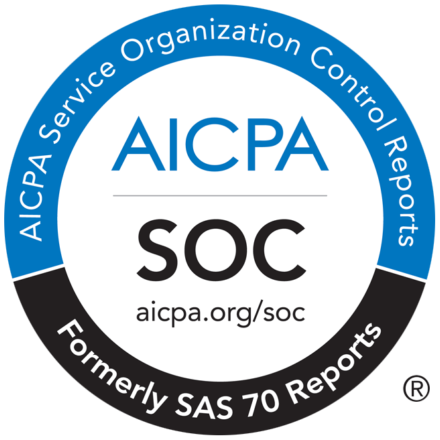The unauthorized use of someone else’s work and passing it under their name can put a writer in trouble when drafting a research paper. Citation mistakes can be a result of negative impressions of your paper and can lead to critical consequences. A writer often gets worried about the writing style and writing format, but they take citation casually. To avoid any citation error, the writer needs to cite an article with utmost care.
It is an instance of plagiarism, and the original author of the content may take legal actions if they feel their right to the work is violated. Plagiarism can be both intentional and unintentional. The students or writer may plagiarize a paper by mistakenly forgetting to put quotation marks or do a proper citation.
For extensive research papers, there can be a long list of citations, and hence the writer should know what to cite and what not to. Sometimes, the publishers encourage the use of abbreviations in work to avoid high numbers of pages.
It can also be the reason for citation mistakes. Good knowledge about how to cite appropriately is much required when a researcher is producing a paper. If a writer fails to arrange the citation properly, it may be messy and unclear for the readers to find out the actual source.
How to Work on the Citation While Composing the Paper?
When a writer is working on a paper, they know the approach to deal with the content. They can list the resources they are going to quote and paraphrase, which makes it easier. While making a list, the writer may include additional information like the author’s name, publication date, and more such things. They can also check the spellings to avoid mistakes.
Since the writer needs to do in-text citation, they can also correctly use their information. The writers should put the quotation marks correctly, and they should also check the part within the quote to avoid any mistake, including the period or the spellings of the words.
Many writers have the misconception that they don’t need to cite the source for paraphrasing. The writer can avoid using quotation marks for the paraphrased part, but they must properly cite the paraphrased content.
Some Common Citation Mistakes :
The writer needs to be careful about citation, as one small mistake can lead to plagiarism. The first and foremost mistake that occurs frequently is an excessive citation.
The students sometimes mistake between bibliography and citation. When a student is citing a work, they only need to mention the works they have quoted or paraphrased.
Only for the bibliography, they need to list all the contents or articles they have suggested for the paper. It is always better to stay away from over-citation. Some other standard citation mistakes are:
- Forgetting to Cite Paraphrased Content:
The most common mistake regarding citation is not citing the paraphrased content used in the article. Many writers think that as they are using paraphrased content, they do not need to do citations. In reality, they don’t need quotations, but they must have to mention the work in the citation.
- Following different citation styles:
While writing the citations, the writer needs to decide which one they want to follow. There are several citation styles like MLA format, APA format, Chicago format, and others. Though most people prefer to use MLA format for the citation, others may choose to follow other citation styles. But, they need to keep up with the consistency. The writer cannot use different types of citation styles in a single article.
- Not following the citation order:
For most citation styles, the author’s last name comes first, followed by the author’s name and the work’s name. The writer needs to list the works based on the alphabetical order of the surname of the author.
It may help the writer avoid confusion about the listing, and hence they can easily stay away from plagiarism caused by mistaken citation.
- Spelling or period mistake:
The writers must be careful with the spelling mistakes. For in-text citations as well, the writer should not write wrong spellings. They should also pay attention to the placement of the periods. The parenthesis for the in-text citations has commas after them.
For the primary citation listings, the writer needs to put information like publication date, a publishing house with commas. The misplaced commas are one of the most common APA mistakes.
- Putting Only In-text Citations:
Often, the writers carelessly put the in-text citation alone without including the work in the primary citation list at the back. This in-text citation with its mention on the main list is invalid. The writer must put them together to avoid plagiarism.
- Using Repeated In-text Citation:
When a writer uses an in-text citation, mentioning the name of the work once is enough. If on the same page, the writer is using it, again and again, they can avoid mentioning it repeatedly. Instead, they can put the citation once at the end of the quotations on that particular page.
- Not Mentioning the Online Articles:
It is a typical mistaken notion that the writers need not do citations for online articles and magazines. Hence, it is one reason for plagiarism occurrence, and it is always important to properly cite the online articles, and it is also essential to mention the URL of the website in work. When the writer puts the link, they need to make sure that they do not put any broken link.
- Mention of Outdated Online Resources:
The writers often do not mention the date they have accessed any online resource. The resource may get removed or edited. Hence, the writer must say the day they have accessed the content. These outdated online resources may be a cause of plagiarism.
- Abbreviations:
The use of abbreviations like ibid and et al. has become popular. The publishers have popularized these short forms, and now the writers use them widely. The problem with these abbreviations are, the authors sometimes mistake the places where to use this. Ibid is used when the writer has already mentioned the source, and hence they want to use “see the previous citation.”
Instead of the whole phrase, they use ibid. If the writer is continually referring to the same source, they can use “et al.” the word al must carry a period in the end; without that, the abbreviation becomes meaningless.
Finally, the writers need to make sure that they are listing all of the texts. If they fail to do so, they may get accused of plagiarism. To avoid plagiarism, they can also use a plagiarism checker to find the duplicated parts and citation mistakes present in the content.
They compare texts with the other materials that exist online and spot the ones present in the article. For the copied parts, the plagiarism checker tool also mentions the source so that the writer can efficiently work on them.

